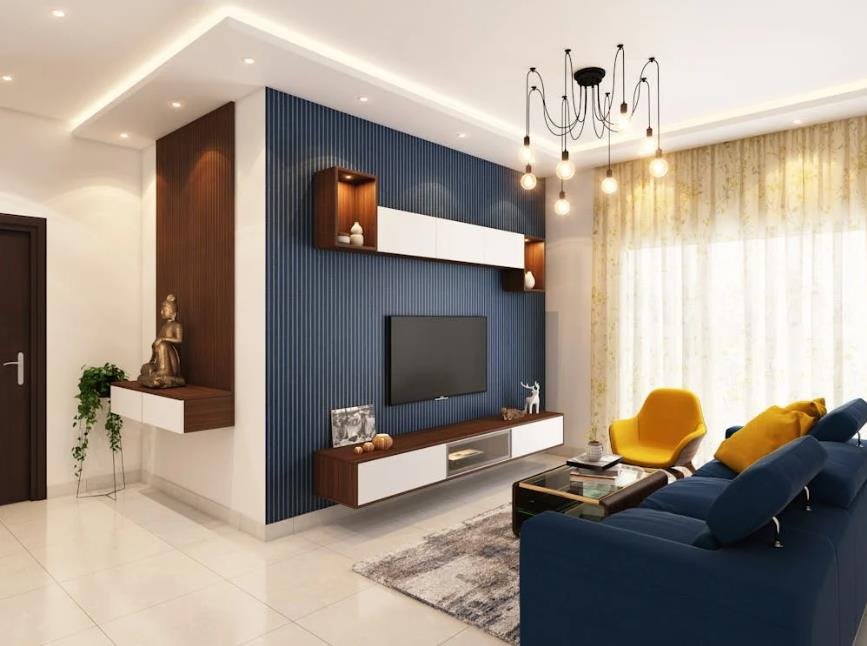Understanding Lighting Types
Before diving into the specifics of choosing and arranging lamps, it’s important to understand the three main types of lighting:
- Ambient Lighting: This is the primary source of light in a room and provides overall illumination. It usually comes from ceiling-mounted fixtures, chandeliers, or recessed lighting. Ambient lighting should be sufficient to allow you to perform everyday tasks comfortably.
- Task Lighting: As the name suggests, task lighting is focused light used to illuminate specific areas where you perform tasks such as reading, cooking, or working. Desk lamps, under-cabinet lighting, and pendant lights are common examples.
- Accent Lighting: This type of lighting highlights particular features or objects in a room, such as artwork, architectural details, or plants. Accent lighting adds depth and interest to a space. Spotlights, track lighting, and wall sconces often serve this purpose.
Choosing the Right Lamps
Selecting the right lamps involves more than just picking a style that matches your décor. Here are key factors to consider:
- Purpose and Function: Determine the primary purpose of each lamp. For instance, a floor lamp next to your reading chair should provide sufficient task lighting, while a table lamp on a side table can enhance ambient light or add a touch of style.
- Size and Scale: The size of the lamp should be proportionate to the space it’s meant to illuminate. A large, elaborate chandelier may overwhelm a small dining room, while a tiny desk lamp may look insignificant on a spacious desk.
- Style and Design: Lamps come in various styles, from modern to traditional. Choose lamps that complement your existing décor. A sleek, minimalist lamp might be ideal for a contemporary space, while a vintage-style lamp could enhance a classic room.
- Light Bulb Type: The type of bulb you use affects both the quality of light and energy consumption. Incandescent bulbs offer a warm, traditional glow, while LED bulbs are energy-efficient and long-lasting. Consider dimmable options for more control over the light intensity.
- Color Temperature: Light bulbs come in different color temperatures, ranging from warm to cool. Warm light (2700K) creates a cozy, inviting atmosphere, while cool light (5000K) is more energizing and better suited for tasks that require focus.
Arranging Lamps for Optimal Effect
Once you’ve selected your lamps, arranging them effectively can enhance both functionality and aesthetics. Here’s how to do it:
- Layer Your Lighting: Use a combination of ambient, task, and accent lighting to create a well-balanced and versatile lighting scheme. This layering allows you to adjust the lighting to suit different activities and moods.
- Create Focal Points: Position accent lighting to highlight key features of your room, such as artwork or architectural details. This draws attention to these elements and adds visual interest.
- Use Multiple Sources: Avoid relying on a single light source for an entire room. Instead, use multiple lamps to distribute light evenly and reduce harsh shadows. For instance, a combination of ceiling lights, table lamps, and floor lamps can create a more dynamic and inviting space.
- Consider Lamp Placement: Place lamps strategically to avoid glare and shadows. For task lighting, ensure the light source is positioned to minimize eye strain. For ambient lighting, distribute lamps throughout the room to maintain an even light level.
- Adjust Height and Position: The height and angle of your lamps can affect how light is distributed. For example, a pendant lamp over a dining table should hang at a height that illuminates the table without obstructing views. Similarly, a floor lamp can be adjusted to direct light where it’s needed most.
Enhancing Specific Areas
Different areas of your home have unique lighting needs. Here’s how to tailor your lighting approach for specific rooms:
- Living Room: The living room is a multifunctional space where ambient, task, and accent lighting all play a role. Use a mix of ceiling fixtures, floor lamps, and table lamps to create a cozy yet functional environment. Consider adding dimmers to adjust the mood as needed.
- Kitchen: Task lighting is crucial in the kitchen for food preparation and cooking. Under-cabinet lights and pendant fixtures over the island can provide focused illumination. Ambient lighting, such as recessed ceiling lights, ensures the entire space is well-lit.
- Bedroom: In the bedroom, a combination of ambient and task lighting creates a relaxing atmosphere. Use bedside lamps for reading and adjustable wall sconces for a soft, ambient glow. Consider using warm bulbs to enhance the tranquil environment.
- Bathroom: Bright, task-oriented lighting is essential in the bathroom, especially around the mirror. Use wall-mounted fixtures or vanity lights to reduce shadows and provide clear illumination for grooming tasks. Ambient lighting can be added with overhead fixtures.
- Dining Room: The dining room benefits from a central chandelier or pendant light that provides focused illumination over the table. This creates a focal point for meals and gatherings. Complement this with dimmable options to adjust the light intensity for different occasions.
Conclusion
The art of home lighting is about more than just choosing pretty lamps; it’s about understanding how light impacts your space and daily life. By selecting the right types of lighting, choosing appropriate lamps, and arranging them thoughtfully, you can transform your home into a well-lit haven that’s both functional and stylish. Remember to layer your lighting, consider the specific needs of each room, and adjust as needed to create the perfect ambiance for every occasion. With these tips, you’ll be well on your way to mastering the art of home lighting and enhancing your living space beautifully.


